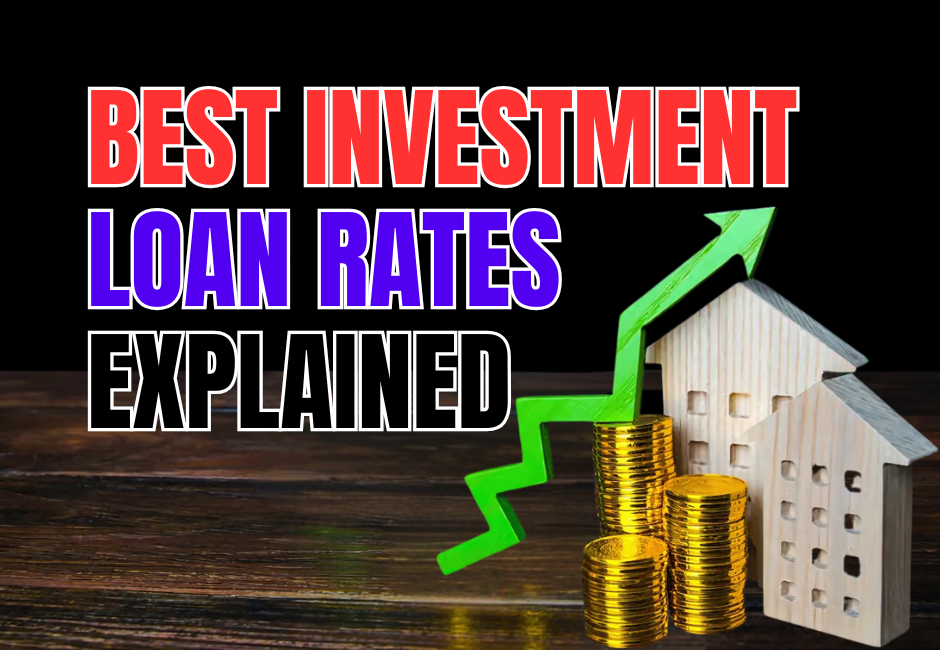
How Investors Can Compare Home Loan Rates to Maximise Profits
How to Interpret and Compare Home Loan Rates for Investment Properties
Home Loan Rates for Investment Properties vs. Primary Residences
Investing in property is one of the most effective ways to build long-term wealth, but choosing the right home loan is just as important as selecting the right property. Many first-time investors mistakenly assume that investment loans work just like owner-occupier mortgages. In reality, lenders view investment loans as higher risk, which means they often come with higher interest rates, tighter borrowing conditions, and additional fees.
Understanding how to interpret and compare home loan rates is critical to maximising your investment returns. The wrong loan can cost thousands of dollars in extra interest and fees, while the right loan can improve cash flow and enhance profitability. This guide explains the key differences between owner-occupier and investment loans, how to compare offers effectively, and practical strategies to secure the best deal.
Key Differences in Loan Terms and Interest Rates
While owner-occupier and investment loans share some structural similarities, they differ in important ways that directly affect your borrowing costs.
1. Higher Interest Rates on Investment Loans
Lenders typically charge higher interest rates on investment property loans because they are viewed as riskier. If a borrower experiences financial difficulties, an investment loan may be deprioritised compared to the loan on their primary residence.
For example, recent market data shows:
- Owner-occupier loans: starting around 5.5% per annum.
- Investment loans: usually 0.5% to 1% higher, often ranging between 6.0% and 6.5% per annum.
Even a small rate difference — such as 0.5% — can translate into tens of thousands of dollars in additional interest over the life of a 30-year loan.
2. Loan-to-Value Ratio (LVR) Requirements
LVR refers to the percentage of the property value that the lender is willing to finance.
- Owner-occupiers: can often borrow up to 95% LVR with Lenders Mortgage Insurance (LMI).
- Investors: typically limited to 80–90% LVR, requiring a larger upfront deposit.
A lower LVR reduces lender risk but demands more capital from the borrower, affecting cash flow and borrowing power.
3. Stricter Lending Criteria
Lenders apply more stringent requirements to investment loans, including:
- Tighter income verification, often discounting rental income by 20–30%.
- Higher deposit requirements (commonly 20% or more).
- More rigorous serviceability testing, with added interest rate buffers to ensure you can afford repayments if rates increase.
4. Interest-Only vs. Principal & Interest (P&I) Repayments
Many investors favour interest-only (IO) loans to minimise initial repayments and boost cash flow. However, IO loans have trade-offs:
- Higher interest rates (typically 0.5–1% more than P&I loans).
- No reduction in the loan principal during the IO period.
- Higher repayments when the loan reverts to P&I.
Choosing the right repayment structure is essential for balancing short-term cash flow and long-term financial goals.
How to Compare Investment Property Loans Using Data
1. Look Beyond the Advertised Interest Rate
Advertised rates can be misleading. Focus instead on the comparison rate, which accounts for both the interest rate and common lender fees.
Example:
- Loan A: advertised rate 5.99% per annum, comparison rate 6.20% per annum.
- Loan B: advertised rate 6.10% per annum, comparison rate 6.12% per annum.
Despite Loan B’s higher advertised rate, its lower comparison rate makes it a more cost-effective option.
2. Consider Loan Fees and Charges
Common investment loan fees include:
- Application fees: AUD 0–1,000.
- Annual package fees: AUD 300–400 per year.
- Valuation and settlement fees: AUD 200–600.
These charges can erode the savings of a low-rate loan. Using a home loan comparison calculator can help reveal the true cost of borrowing.
3. Assess Loan Features for Flexibility
Look for loans that offer:
- Offset accounts to reduce the effective loan balance.
- Redraw facilities to access extra repayments.
- The ability to make extra repayments without penalty.
For example, a 100% offset account on a AUD 500,000 loan at 6.0% per annum, combined with AUD 50,000 in savings, could reduce interest costs by around AUD 15,000 over 10 years.
Tips for Maximising Investment Loan Benefits
1. Compare and Negotiate with Multiple Lenders
Lenders compete for borrowers, so it pays to compare offers. A strong credit score and solid financial profile can help you negotiate better rates and reduced fees.
2. Choose Between Fixed and Variable Rates Carefully
- Fixed rates provide certainty and protect against rate increases.
- Variable rates offer flexibility and may save money if rates fall.
- Split loans combine both, offering stability and adaptability.
3. Avoid Over-Borrowing
Overextending yourself increases financial risk. Stress-test your loan by considering:
- Potential rate increases of 2–3%.
- Rental vacancies or income drops.
- Unexpected maintenance or repair costs.
4. Structure the Loan for Maximum Tax Benefits
Investment loans can offer tax advantages such as negative gearing and deductible interest. Work with your accountant or adviser to ensure your loan is set up to maximise these benefits.
Using Data to Find the Best Investment Loan Deals
Investment loans come with unique challenges, including higher rates, stricter lending criteria, and additional fees. A purely rate-focused approach can overlook hidden costs or inflexible loan features.
To get the best deal:
- Use data-driven loan comparisons.
- Evaluate true borrowing costs by factoring in fees.
- Consider flexibility and features, not just the headline rate.
- Shop around, negotiate, and tailor your loan structure to your investment strategy.
With a thoughtful, numbers-based approach, you can maximise cash flow, reduce risk, and position your investment portfolio for long-term success.




